Glad to see the Marans club come up with a standard. Good luck to you all. I know its been hard work.
Navigation
Install the app
How to install the app on iOS
Follow along with the video below to see how to install our site as a web app on your home screen.
Note: This feature may not be available in some browsers.
More options
You are using an out of date browser. It may not display this or other websites correctly.
You should upgrade or use an alternative browser.
You should upgrade or use an alternative browser.
MARANS - proposed standards - - FOR REFERENCE PURPOSES
- Thread starter math ace
- Start date
- Thread starter
- #12
Updated post to include pics of DQ and faults on Shanks, toes, and other parts of body...
Fault - White in the hackle.
White under coat in the hackles of a 5 month old Black Copper cockerel.

Fault - Straw colored hackles

Fault - Feather Shafting

Fault - Feather Shafting
On Chest of roo on left

DQ - Mossiness on Black Copper. Standard says "brown spotting on female" i.e. mossiness

Blue birchen girl has mossiness . In the birchens it comes through more as white and shades of cream than it does brown like in the BCMs.

FAULT - feathers on middle toe.

Fault - feathers on middle toe

Fault - Crooked Toe

Fault - Crooked toes
Quote:

Missing toe nail on Rudimentary toe - FAULT

Spurs on a Hen - Fault

DQ- lacking in breed specifications BLACK CHEST

Split wing - DQ


Fault - White in the hackle.
White under coat in the hackles of a 5 month old Black Copper cockerel.
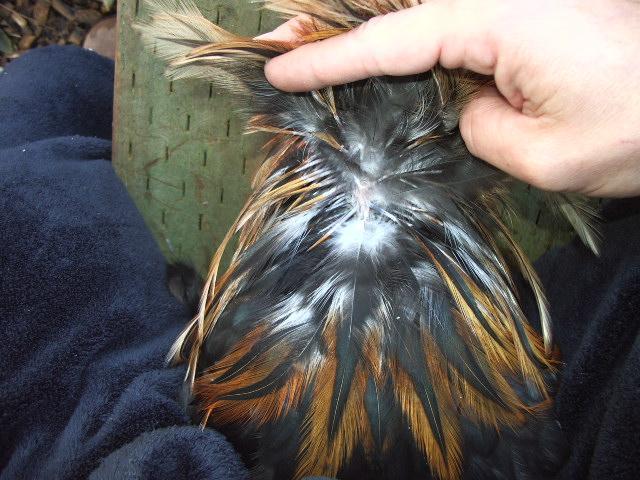
Fault - Straw colored hackles
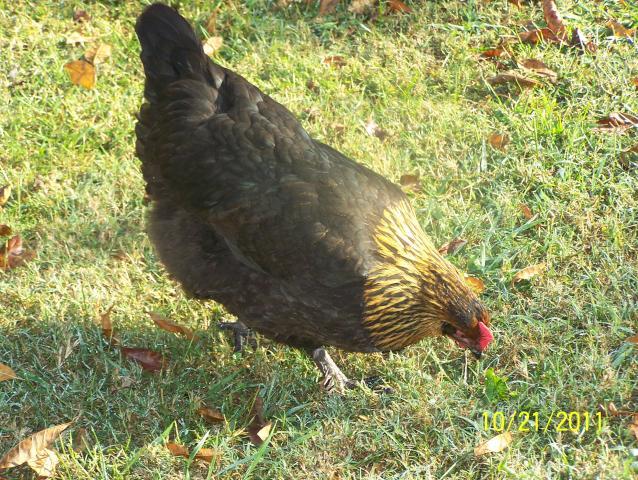
Fault - Feather Shafting
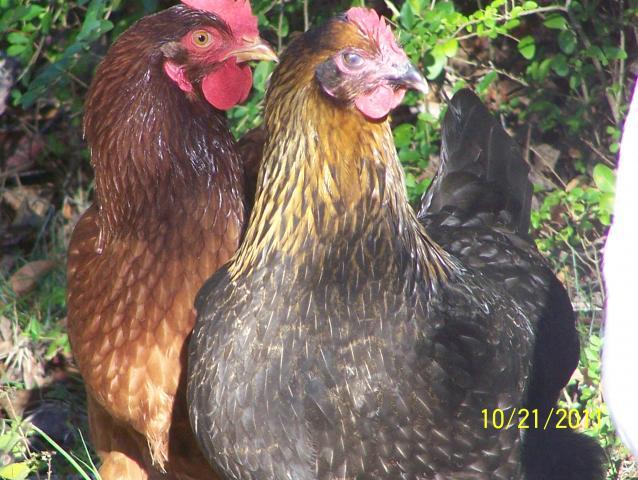
Fault - Feather Shafting
On Chest of roo on left
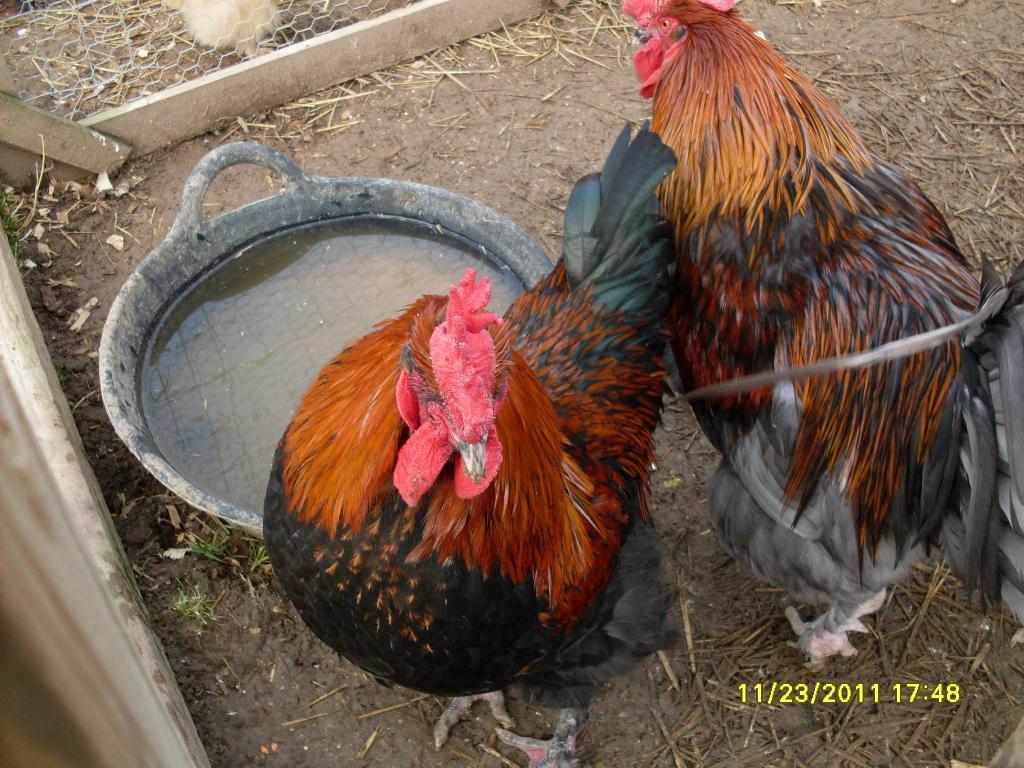
DQ - Mossiness on Black Copper. Standard says "brown spotting on female" i.e. mossiness
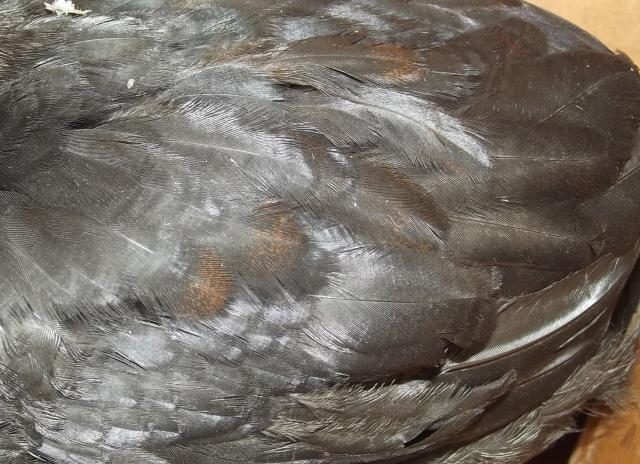
Blue birchen girl has mossiness . In the birchens it comes through more as white and shades of cream than it does brown like in the BCMs.
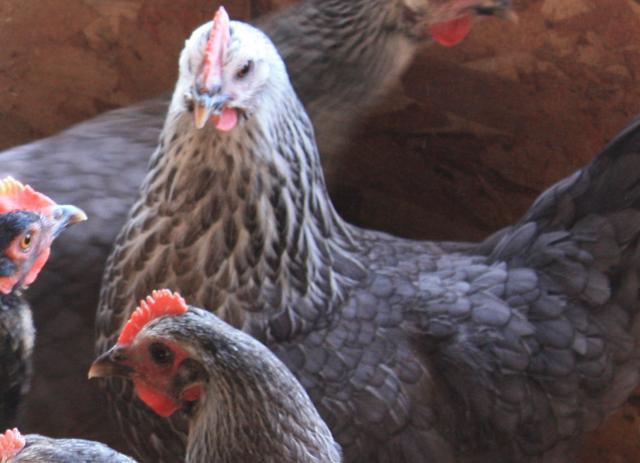
FAULT - feathers on middle toe.
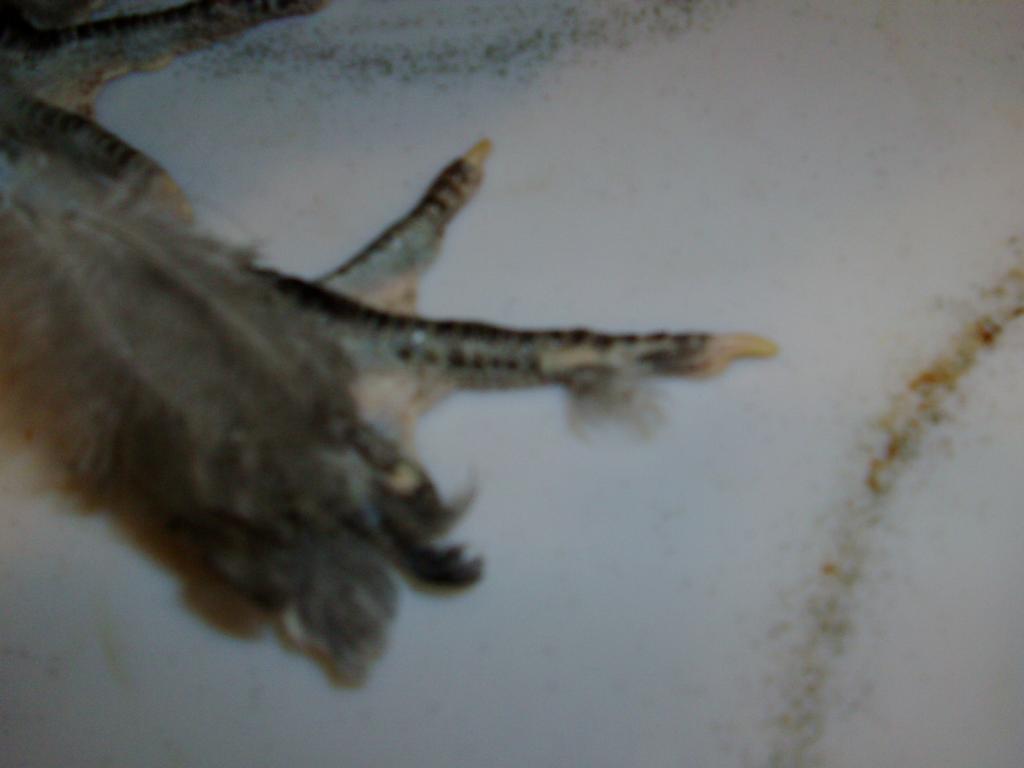
Fault - feathers on middle toe

Fault - Crooked Toe

Fault - Crooked toes
Quote:
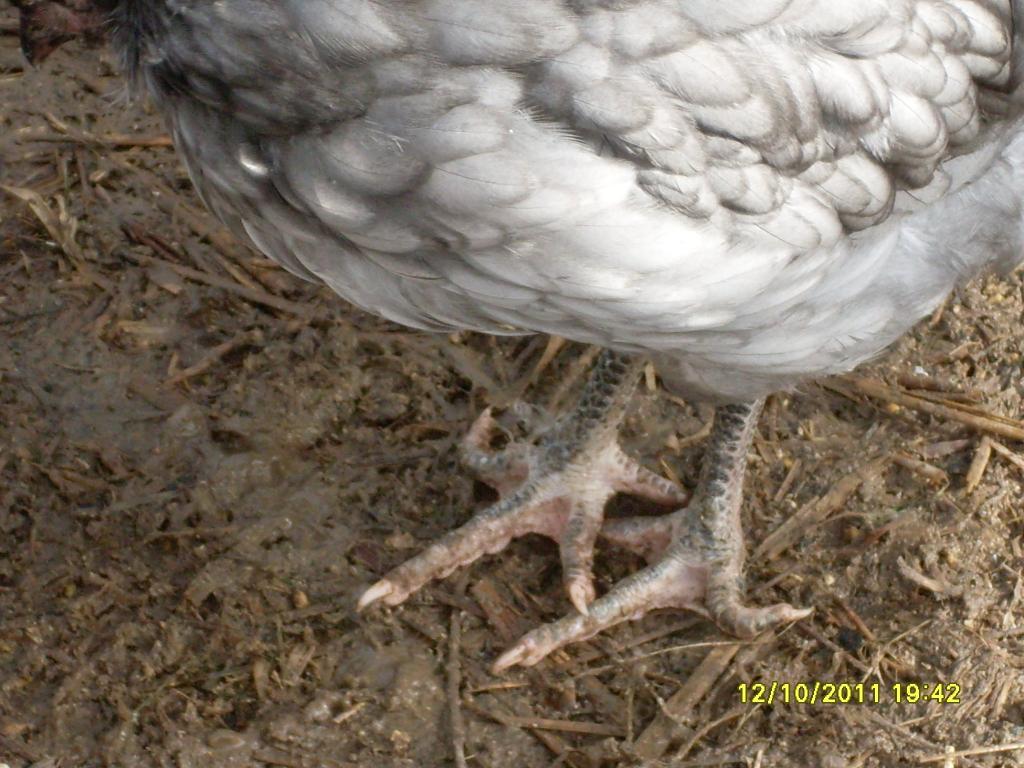
Missing toe nail on Rudimentary toe - FAULT
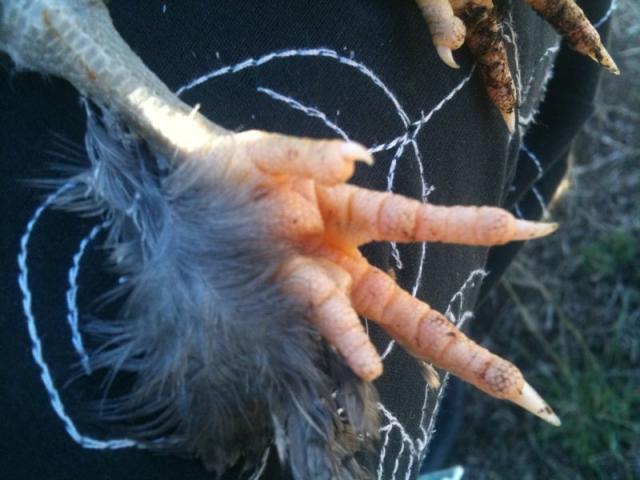
Spurs on a Hen - Fault
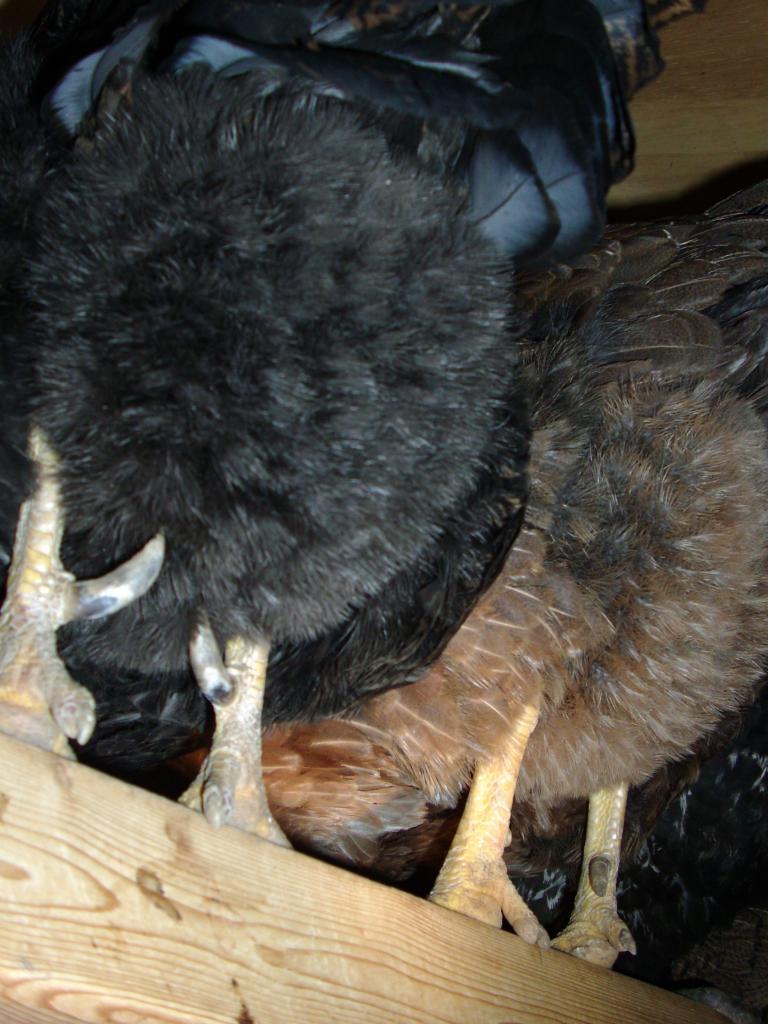
DQ- lacking in breed specifications BLACK CHEST

Split wing - DQ


Last edited:
- Thread starter
- #13
BLACK COPPER MARANS 7 /26/10 version
Disqualifications (approved 7/26/10)
Yellow on shanks or toes. White ear lobes. Pearl or black eyes. Absence of feathers on shanks. (See General Disqualifications and Cutting for Defects.)
Standard Weights (approved 6/11/10)
Cock . ..8 lbs Hen 6 1/2 lbs
Cockerel .7lbs Pullet ..5 1/2 lbs
ShapeMale (approved 6/11/10)
COMB: Single, moderately large, straight, upright, evenly serrated with five points; the blade not touching the neck.
BEAK: Long, stout and well curved.
FACE: Smooth, skin fine and soft in texture.
EYES: Large and prominent.
WATTLES: Medium in size, oval, skin fine in texture.
EAR-LOBES: Average in size, long.
HEAD: Moderate in size, slightly flattened on top, and long.
NECK: Moderately long and full, arched. Hackle abundant, flowing well over the shoulders.
BACK: Wide at the shoulders, long, flat, slightly tilted to the rear. Slightly more inclined than that of the female.
Saddle feathers -- abundant, saddle large and slightly raised.
TAIL: Full, rather short, carried at an angle of 45 degrees above horizontal.
Main tail feathers -- broad and overlapping, shorter than average.
Sickles -- shorter than average.
WINGS: Short, held close to the body, carriage nearly horizontal.
Primaries and secondaries -- broad and overlapping in natural order when wing is folded.
BREAST: Strong, broad, and full. Well rounded when viewed from both the front and side.
BODY AND FLUFF: Body -- deep, long and broad, especially through the shoulders which are carried high. Overall, rectangular in shape.
Fluff -- medium in length.
LEGS and TOES: Legs set well apart and straight when viewed from the front.
Lower thighs -- strong and well feathered.
Shanks -- medium length, stout, and straight; lightly feathered down the outer sides.
Toes -- four long and well-separated toes on each foot. Outer toes lightly feathered, middle toes free from feathers.
PLUMAGE: Moderately tight and smooth textured.
ShapeFemale (approved 7/09/10)
COMB: Single, smaller than that of the male; straight and upright, evenly serrated with five points, and fine in texture. No female in or near production with the rear portion of the comb lopped should be discriminated against.
BEAK: Long, stout and well curved.
FACE: Smooth, skin fine and soft in texture.
EYES: Large and prominent.
WATTLES: Medium in size, oval.
EAR-LOBES: Average in size, long.
HEAD: Moderate in size, slightly flattened on top, and long.
BACK: Wide at the shoulders, long, flat, and slightly tilted to the rear. Slightly less inclined that that of the male.
NECK: Moderately long and full, arched.
TAIL: Full, rather short, carried at an angle of 45 degrees above horizontal.
Main tail feathers -- broad and overlapping, shorter than average.
WINGS: Short, held close to the body, carriage nearly horizontal.
Primaries and secondaries -- broad and overlapping in natural order when wing is folded.
BREAST: Strong, broad, and full. Well rounded when viewed from both the front and side.
BODY AND FLUFF: Body -- deep, long and broad, especially through the shoulders which are carried high. Should be more rounded than the male.
Fluff -- medium in length.
LEGS AND TOES: Legs set well apart, straight when viewed from the front.
Lower Thighs -- strong and well feathered.
Shanks -- medium length, stout, and straight; lightly feathered down the outer sides.
Toes -- four long and well-separated toes on each foot. Outer toes lightly feathered, middle toes free from feathers..
PLUMAGE: Moderately tight and smooth textured.
Disqualifications (approved 7/26/10)
Yellow on shanks or toes. White ear lobes. Pearl or black eyes. Absence of feathers on shanks. (See General Disqualifications and Cutting for Defects.)
Standard Weights (approved 6/11/10)
Cock . ..8 lbs Hen 6 1/2 lbs
Cockerel .7lbs Pullet ..5 1/2 lbs
ShapeMale (approved 6/11/10)
COMB: Single, moderately large, straight, upright, evenly serrated with five points; the blade not touching the neck.
BEAK: Long, stout and well curved.
FACE: Smooth, skin fine and soft in texture.
EYES: Large and prominent.
WATTLES: Medium in size, oval, skin fine in texture.
EAR-LOBES: Average in size, long.
HEAD: Moderate in size, slightly flattened on top, and long.
NECK: Moderately long and full, arched. Hackle abundant, flowing well over the shoulders.
BACK: Wide at the shoulders, long, flat, slightly tilted to the rear. Slightly more inclined than that of the female.
Saddle feathers -- abundant, saddle large and slightly raised.
TAIL: Full, rather short, carried at an angle of 45 degrees above horizontal.
Main tail feathers -- broad and overlapping, shorter than average.
Sickles -- shorter than average.
WINGS: Short, held close to the body, carriage nearly horizontal.
Primaries and secondaries -- broad and overlapping in natural order when wing is folded.
BREAST: Strong, broad, and full. Well rounded when viewed from both the front and side.
BODY AND FLUFF: Body -- deep, long and broad, especially through the shoulders which are carried high. Overall, rectangular in shape.
Fluff -- medium in length.
LEGS and TOES: Legs set well apart and straight when viewed from the front.
Lower thighs -- strong and well feathered.
Shanks -- medium length, stout, and straight; lightly feathered down the outer sides.
Toes -- four long and well-separated toes on each foot. Outer toes lightly feathered, middle toes free from feathers.
PLUMAGE: Moderately tight and smooth textured.
ShapeFemale (approved 7/09/10)
COMB: Single, smaller than that of the male; straight and upright, evenly serrated with five points, and fine in texture. No female in or near production with the rear portion of the comb lopped should be discriminated against.
BEAK: Long, stout and well curved.
FACE: Smooth, skin fine and soft in texture.
EYES: Large and prominent.
WATTLES: Medium in size, oval.
EAR-LOBES: Average in size, long.
HEAD: Moderate in size, slightly flattened on top, and long.
BACK: Wide at the shoulders, long, flat, and slightly tilted to the rear. Slightly less inclined that that of the male.
NECK: Moderately long and full, arched.
TAIL: Full, rather short, carried at an angle of 45 degrees above horizontal.
Main tail feathers -- broad and overlapping, shorter than average.
WINGS: Short, held close to the body, carriage nearly horizontal.
Primaries and secondaries -- broad and overlapping in natural order when wing is folded.
BREAST: Strong, broad, and full. Well rounded when viewed from both the front and side.
BODY AND FLUFF: Body -- deep, long and broad, especially through the shoulders which are carried high. Should be more rounded than the male.
Fluff -- medium in length.
LEGS AND TOES: Legs set well apart, straight when viewed from the front.
Lower Thighs -- strong and well feathered.
Shanks -- medium length, stout, and straight; lightly feathered down the outer sides.
Toes -- four long and well-separated toes on each foot. Outer toes lightly feathered, middle toes free from feathers..
PLUMAGE: Moderately tight and smooth textured.
- Thread starter
- #14

I just thought I would throw in some benchmarks to this....
I weighed my cockerel today and at 18 weeks old he was 5 lbs and 13 ounces.
His sire is 8 3/4 lbs. The standard calls for an 8 lb rooster.
So, the cockerels need to be around 5 1/2 pounds by 18 weeks to meet this goal.
At least with my stock, this is what I am seeing.
- Thread starter
- #15
Ladies and gents,
This thread has now been updated with pics of some of the faults and DQ's.
As always, you can check in the first part of the APA SOP book and you will find more examples of some of these faults and DQs.
I will continue to add more pics of faults and DQ's as I stumble across them.
REMEMBER: This thread was created just to be a QUICK reference. Somewhere to go and QUICKLY find some basic information.
Please, do not chat on this thread



There is a thread dealing with the SOP that you can post questions in. It is at the following link:
https://www.backyardchickens.com/forum/viewtopic.php?id=517113&p=1
Enjoy and thanks for visiting!

This thread has now been updated with pics of some of the faults and DQ's.
As always, you can check in the first part of the APA SOP book and you will find more examples of some of these faults and DQs.
I will continue to add more pics of faults and DQ's as I stumble across them.
REMEMBER: This thread was created just to be a QUICK reference. Somewhere to go and QUICKLY find some basic information.
Please, do not chat on this thread



There is a thread dealing with the SOP that you can post questions in. It is at the following link:
https://www.backyardchickens.com/forum/viewtopic.php?id=517113&p=1
Enjoy and thanks for visiting!

- Aug 25, 2011
- 307
- 10
- 116
Perfect thread, just whats needed.................... Thank you
Last edited:
- Thread starter
- #17
The previous pictures were Examples of what marans SHOULD NOT look like.
The next group of pictures will examples of what marans SHOULD look like.
SOP for COMB: Single, moderately large, straight, upright, evenly serrated with five points; the blade not touching the neck.
The next group of pictures will examples of what marans SHOULD look like.
SOP for COMB: Single, moderately large, straight, upright, evenly serrated with five points; the blade not touching the neck.
Last edited:
- Thread starter
- #18
SOP for
Shape AND Color
BEAK: Long, stout and well curved. Horn color, black shading permitted.
EYES: Large and prominent. Reddish bay color.
Shape AND Color
BEAK: Long, stout and well curved. Horn color, black shading permitted.
EYES: Large and prominent. Reddish bay color.
- Thread starter
- #19
SOP for LEGS and TOES: Legs set well apart and straight when viewed from the front.
Lower thighs -- strong and well feathered.
Shanks -- medium length, stout, and straight; lightly feathered down the outer sides.
Toes -- four long and well-separated toes on each foot. Outer toes lightly feathered, middle toes free from feathers.
Lower thighs -- strong and well feathered.
Shanks -- medium length, stout, and straight; lightly feathered down the outer sides.
Toes -- four long and well-separated toes on each foot. Outer toes lightly feathered, middle toes free from feathers.
Wow very detailed pics

thanks for sharing


thanks for sharing

New posts New threads Active threads
-
Latest threads
-
Project 365 Days of Fluster Cluckery
- Started by Fluster Cluck Acres
- Replies: 1
-
Ok to let them sleep seperately? Different birds at different stages of roost interest
- Started by Echelontheory101
- Replies: 4
-
Duck egg version of poultry hub website?
- Started by ilikechickens10
- Replies: 1
-
-
CheekyChook13’s project 365 thread
- Started by CheekyChook13
- Replies: 2
-
-
Threads with more replies in the last 15 days
-
-
Introducing TUDYBOOK - The Tudy Coloring Book Generator
- Started by Nifty-Chicken
- Replies: 70
-
-
-
Open Contest TudyBook Holiday Dreams, a Text-to-Image Contest
- Started by Debbie292d
- Replies: 46
-
×


